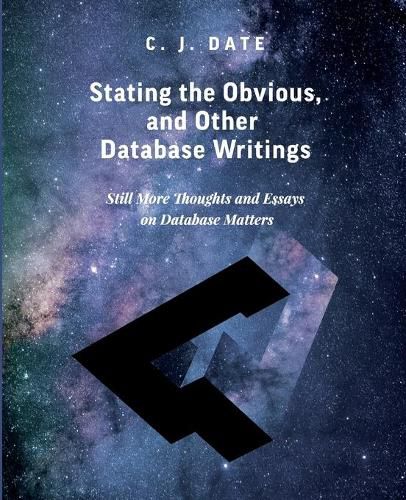Readings Newsletter
Become a Readings Member to make your shopping experience even easier.
Sign in or sign up for free!
You’re not far away from qualifying for FREE standard shipping within Australia
You’ve qualified for FREE standard shipping within Australia
The cart is loading…






This title is printed to order. This book may have been self-published. If so, we cannot guarantee the quality of the content. In the main most books will have gone through the editing process however some may not. We therefore suggest that you be aware of this before ordering this book. If in doubt check either the author or publisher’s details as we are unable to accept any returns unless they are faulty. Please contact us if you have any questions.
Some things seem so obvious that they dont need to be spelled out in detail. Or do they? In computing, at least (and probably in any discipline where accuracy and precision are important), it can be quite dangerous just to assume that some given concept is obvious, and indeed universally understood. Serious mistakes can happen that way! The first part of this book discusses features of the database fieldequality, assignment, namingwhere just such an assumption seems to have been made, and it describes some of the unfortunate mistakes that have occurred as a consequence. It also explains how and why the features in question arent quite as obvious as they might seem, and it offers some advice on how to work around the problems caused by assumptions to the contrary.
Other parts of the book also deal with database issues where devoting some preliminary effort to spelling out exactly what the issues in question entailed could have led to much better interfaces and much more carefully designed languages. The issues discussed include redundancy and indeterminacy; persistence, encapsulation, and decapsulation; the ACID properties of transactions; and types vs. units of measure. Finally, the book also contains a detailed deconstruction of, and response to, various recent pronouncements from the database literature, all of them having to do with relational technology. Once again, the opinions expressed in those pronouncements might seem obvious to some people (to the writers at least, presumably), but the fact remains that theyre misleading at best, and in most cases just flat out wrong.
$9.00 standard shipping within Australia
FREE standard shipping within Australia for orders over $100.00
Express & International shipping calculated at checkout
This title is printed to order. This book may have been self-published. If so, we cannot guarantee the quality of the content. In the main most books will have gone through the editing process however some may not. We therefore suggest that you be aware of this before ordering this book. If in doubt check either the author or publisher’s details as we are unable to accept any returns unless they are faulty. Please contact us if you have any questions.
Some things seem so obvious that they dont need to be spelled out in detail. Or do they? In computing, at least (and probably in any discipline where accuracy and precision are important), it can be quite dangerous just to assume that some given concept is obvious, and indeed universally understood. Serious mistakes can happen that way! The first part of this book discusses features of the database fieldequality, assignment, namingwhere just such an assumption seems to have been made, and it describes some of the unfortunate mistakes that have occurred as a consequence. It also explains how and why the features in question arent quite as obvious as they might seem, and it offers some advice on how to work around the problems caused by assumptions to the contrary.
Other parts of the book also deal with database issues where devoting some preliminary effort to spelling out exactly what the issues in question entailed could have led to much better interfaces and much more carefully designed languages. The issues discussed include redundancy and indeterminacy; persistence, encapsulation, and decapsulation; the ACID properties of transactions; and types vs. units of measure. Finally, the book also contains a detailed deconstruction of, and response to, various recent pronouncements from the database literature, all of them having to do with relational technology. Once again, the opinions expressed in those pronouncements might seem obvious to some people (to the writers at least, presumably), but the fact remains that theyre misleading at best, and in most cases just flat out wrong.